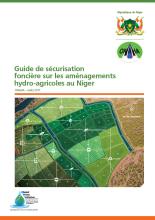Land Library
Bienvenue dans la bibliothèque du Land Portal. Explorez notre vaste collection de ressources en libre accès (plus de 74 000), comprenant des rapports, des articles scientifiques, des articles de recherche, des publications évaluées par des pairs, des documents juridiques, des vidéos et bien plus encore.
/ library resources
Showing items 1 through 9 of 34.This Case Study looks at the implementation of the Vacant, Fallow and Virgin Lands Management Law (VFV Law) in seven villages in Sagaing Region, to assess the practices on the ground and how the law impacts the land tenure security of smallholder farmers.
There are 85 irrigation schemes in Niger that cover around 16,000 ha and are cultivated by 40,000 farmers. The informal status of these irrigation schemes, and their occupants, has created problems due to population growth and the increasing scarcity of natural resources.
Le Niger compte aujourd’hui 85 aménagements hydro-agricoles (AHA), qui s’étendent sur environ 16 000 hectares et font travailler plus de 40 000 exploitants. Avec la pression démographique et la raréfaction des ressources naturelles disponibles pour l’activité agricole, l’informalité de la g
Construction of the Kandadji dam in Niger will involve, among other consequences, the appropriation of agricultural land owned by customary holders but also in many cases sub-holdings of other non-landowners.
Le développement de l’irrigation fait partie des stratégies prioritaires dans les pays du Sahel pour lutter contre la pauvreté et l’insécurité alimentaire.
The development of irrigation is one of the priority strategies in the Sahel countries to tackle poverty and food insecurity.
This guidebook provides conceptual, legal and practical tools and resources to help civil society organizations guide communities through the process of documenting customary tenure at the local level.
For a dam to successfully contribute to the sustainable development of the society, the local populations should also benefit from it.
Le développement de l’irrigation fait partie des stratégies prioritaires dans les pays du Sahel pour lutter contre la pauvreté et l’insécurité alimentaire.







